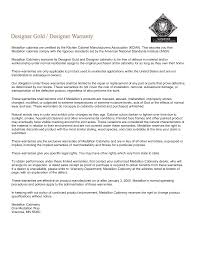
As the longest connecting activities, critical paths are defined. Critical pathways can be used by project managers to help them identify their projects. The criticality of a given project is the first step to determining if there is an appropriate critical path. Next, identify the critical path. Next, identify its length, end and start points, as well as network sensitivity.
Triangular distribution
A critical route diagram is a visual representation for the project's activities. While critical path diagrams were originally drawn by hand in the past, they can now be created using software. You must calculate the time required to complete each activity in order to create a critical route diagram. You might need to calculate the time in either days or weeks. Either way, you should use the 3-point estimation method to make sure you have an accurate timeframe.
The PERT method leverages the three-point estimation technique. It can also be used at any planning level. PERT methods implicitly weight only the most probable estimate. They also give probabilities for the expected ranges.
Early start
The critical pathway method is used to calculate the duration of a project. It calculates the theoretical earliest and latest start and finish dates of a project activity by performing a forward pass and backward pass analysis. These results may not always match the actual project schedule but they will indicate the time periods within which certain activities should be scheduled.

Critical pathways project management places a restriction on when the start or end dates can be set. This is because the previous activities must have been completed. This means that the prior activity must be completed before the start date of the new task. It is important that the prior activity be completed before the start date of the new task. This will ensure that it is completed on schedule. The result is a project schedule with more flexibility.
End early
Using the critical path method can be an effective way to manage a project. This allows you and your team to control the time and budget of a project. This is done by estimating the time required to complete each task in a project. For a smaller project, the estimated time can be in days or weeks. To help you calculate the exact time frame for your project, use the 3-point estimate method.
The critical path is a set of activities that must all be completed in the same order. Each activity in the critical path comes with a deadline. This timeline will be adjusted if activities are late or completed before the deadline.
Network Sensitivity
When planning a project, one of the first steps is identifying the critical activities, including activities that must be done in the shortest time possible. This technique uses the Forward Pass/Back Pass technique to identify these activities along with their estimated start and stop times. This technique is very useful for project managers as it helps to prioritize activities depending on their importance. In addition to ensuring that projects remain on track, the critical path method can also help project managers anticipate timelines. They can also use it to outline the fastest path to completion of the project.
A critical path diagram highlights the critical activities. However, they may not overlap. These critical activities are represented as circles in the diagram, containing the name of the activity, its estimated duration, and the dependent activities. The critical path is connected by arrows that show the dependencies between them. The PERT formula calculates both the Standard Deviation (SD), and the Mean for each critical activity. It also calculates the Critical Path's Duration. By combining these two values, the Optimistic Critical Path is calculated.

Resource leveling
Resource leveling is a tool that can be used for critical pathway project manager. This method requires project managers to identify and complete the tasks that are critical to the success of the project. This is a method that helps keep a project on track, even if it is behind schedule. It works by defining "critical" tasks and using a structured sequential workflow to complete them. This method of project managing can improve resource levels because it forces team members to concentrate only on critical tasks and leaves out the other activities.
Resource leveling uses an algorithmic scheduling system to determine how many resources are required for different activities. The program analyzes the schedule calendar to determine the number of resources required by each activity. The program then ranks activities according to the leveling prioritization index. The lowest priority activity is given a lower priority. Other activities are given a higher priority.
FAQ
Is a guarantee a service contract?
A service contract is not a warranty. It is an agreement between 2 parties to exchange goods. If the product is not performing satisfactorily, the customer agrees with the seller to cover the repair or replacement costs. This type is also known under the name maintenance contract.
What is a "Standard Contract Form"?
A standard contract template is one way to create contracts. These templates typically include all the elements required for creating a contract such as the date and time, the place, and the parties.
You can customize standard contract templates to suit your clients. Some companies provide their standard contract templates.
These forms may not be right for everyone. They can save you lots of time and effort.
One of these standard forms could be an option.
Do I have to sign anything prior to starting work?
Yes. Both parties must sign your SCA. This means that one party cannot change their mind without the consent of another.
Who provides a Service Agreement?
You and your customer will agree on how you will provide services. It defines the customer's responsibilities. It also describes what you will do for them. And when they have pay you.
The service agreement also confirms if there are any additional fees involved for extra services.
A service agreement should include all the terms and conditions that apply to the contract. This includes delivery dates, payment methods, warranties and other terms.
Use this template to ensure that you have covered all the details of your agreement.
Is there any limit on how much money I can spend for the project?
No. No. The contractor may be willing to negotiate a lower price.
What are the payment terms for the service/contractor I am required to pay?
The type and amount of the service will affect the payment schedule. If you hire a contractor for a roof installation, payments would be made as soon as the work is completed. In contrast, if you buy a product from a supplier, such as a kitchen range cooker, you might only pay after receiving and testing the item.
What happens if one party doesn't take their side of the deal?
Failure to keep your promises can result in the law permitting the other party to sue you and treat your promise as null. Damages include the amount due plus interest, court cost, and legal fees.
Statistics
- (1) Except as provided in paragraphs (a)(4) and (a)(8) of this section, if the estimated amount of the contract or subcontract is $10 million or more, the contracting officer shall request clearance from the appropriate OFCCP regional office before- (acquisition.gov)
- Don't take their anger personally, they are mad about the situation 99% of the time. (activatemylicense.com)
- Depending on the client's trustworthiness and financial stability, a deposit is usually 10 to 50% of the total contract amount. (lawdepot.com)
- (v) Place or places of performance of the prime contract and first-tier subcontracts estimated at $10 million or more, if known. (acquisition.gov)
- (ii) Name, address, and telephone number of each proposed first-tier subcontractor with a proposed subcontract estimated at $10 million or more. (acquisition.gov)
External Links
How To
How can I get started with the negotiation of my first service arrangement?
Negotiating the terms of a first service agreement can seem like a daunting task.
However, it does not have to be difficult for you to negotiate the terms of your first contract.
It all depends upon how prepared you're.
Before you begin negotiations, you should ensure that you understand the terms and conditions of your first service agreement.
You should, for example, know exactly what you will do to the customer.
Know what the customer is expecting from you.
Once you have a clear idea of what you will provide, you can start preparing for negotiation.
The more information you have the better prepared you will be when you sit down with the other party.